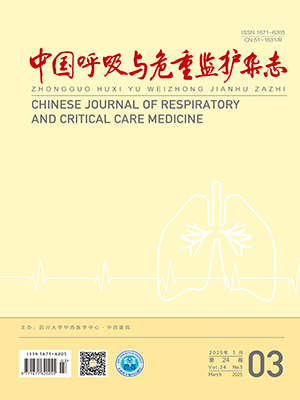Objective To evaluate the relationship between CT lesion changes in COVID-19 patients and different subgroups of T lymphocytes, providing reference information for assessing patient conditions, predicting outcomes, and evaluating treatment efficacy. Methods Clinical and imaging data of confirmed COVID-19 patients admitted to the Chongqing Public Health Medical Center from January 24 to March 15, 2020, were collected. Based on the absorption characteristics of lesions in CT images, patients were categorized into three groups: Group A (obviously continuously absorbed), Group B (stable-slow absorption), and Group C (progressive absorption). The relationship between CT changes and T lymphocyte subgroups was analyzed according to lesion absorption. Results A total of 47 patients were included, with 18 in Group A, 14 in Group B, and 15 in Group C. At different stages—admission, during treatment, and at the end of treatment—the levels of T lymphocytes were observed as follows: Group A>Group B>Group C. When lesions were absorbed, the average count of CD4+ T lymphocytes was (544.43 ± 163.34) cells/μl; when lesions showed little change or increased, CD4+ T lymphocyte levels decreased to varying degrees. During treatment, both Group A and Group B showed CD4+ T lymphocyte levels returning to above normal levels, with an average increase of 134 cells/μl in Group A, which was lower than that in Group B (192 cells/μl) and Group C (149 cells/μl). Finally, T lymphocyte levels reached normal in all groups, but Group A levels were higher than those in Groups B and C (P<0.05). Upon follow-up, the average CD4+ T lymphocyte count was (544.43 ± 163.34) cells/μl in 52 cases of lesion absorption, (339.06 ± 145.98) cells/μl in 31 cases of minimal change, and (230.50 ± 95.24) cells/μl in 16 cases of lesion progression, with statistically significant differences among the three groups (P<0.05). Conclusions The increase in lung lesions in patients indicates poor immune function, necessitating enhanced immune regulation. Conversely, if a decrease in T lymphocyte levels is detected during the course of the disease, attention should be given to the risk of lesion progression, and timely CT re-examinations should be conducted to monitor changes in lesions.
Citation:
TANG Guangxiao, LIU Xueyan, LI Chunhua, WANG Huiqiu, SHU Weiqiang, ZHAO Jing, LIU Yu, LV Shengxiu. Correlation between chest CT changes and T lymphocyte subsets in COVID-19. Chinese Journal of Respiratory and Critical Care Medicine, 2024, 23(10): 691-695. doi: 10.7507/1671-6205.202311034
Copy
Copyright © the editorial department of Chinese Journal of Respiratory and Critical Care Medicine of West China Medical Publisher. All rights reserved




